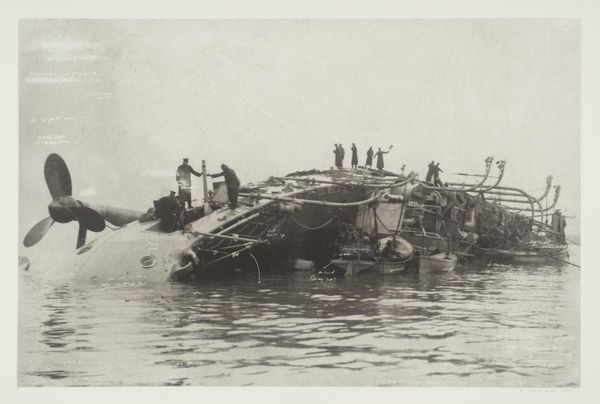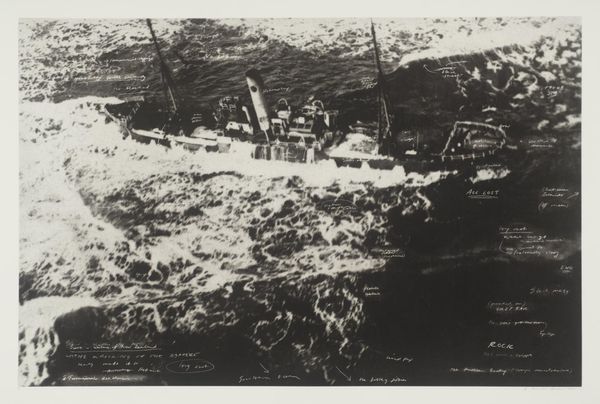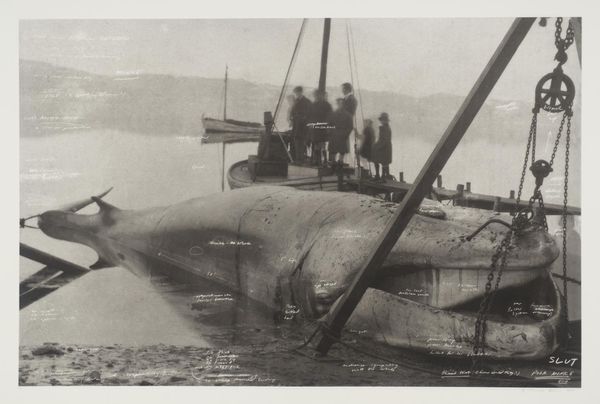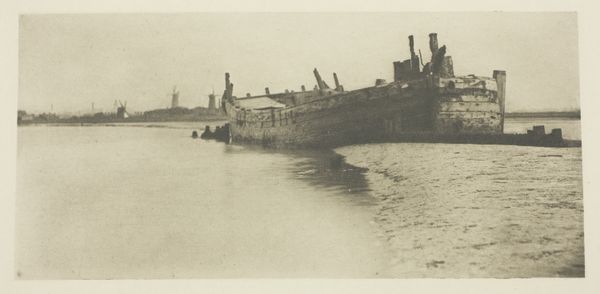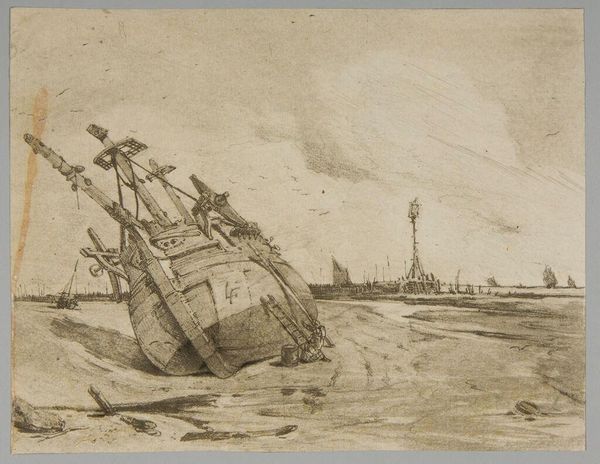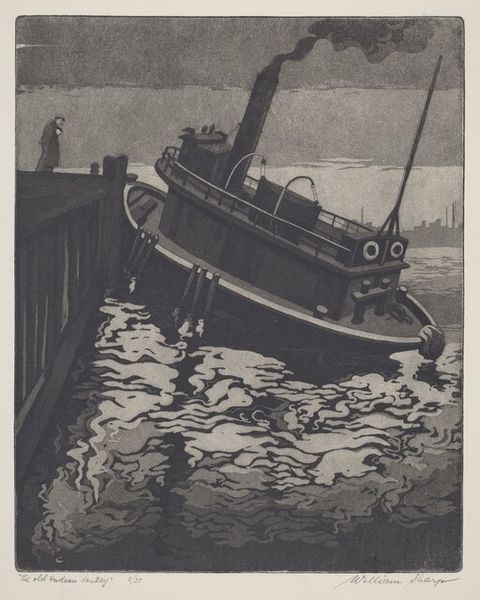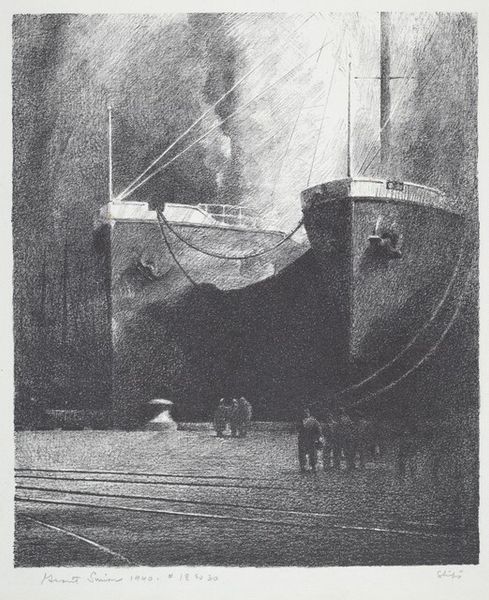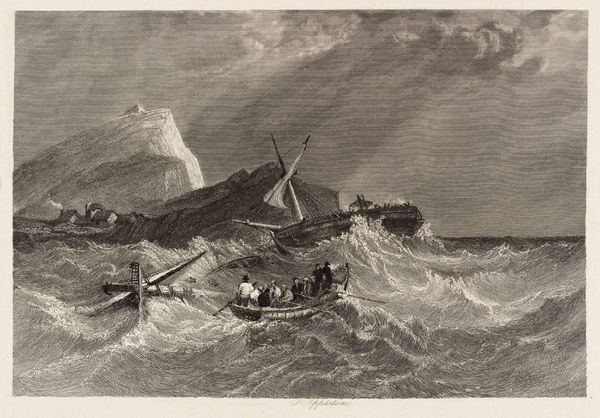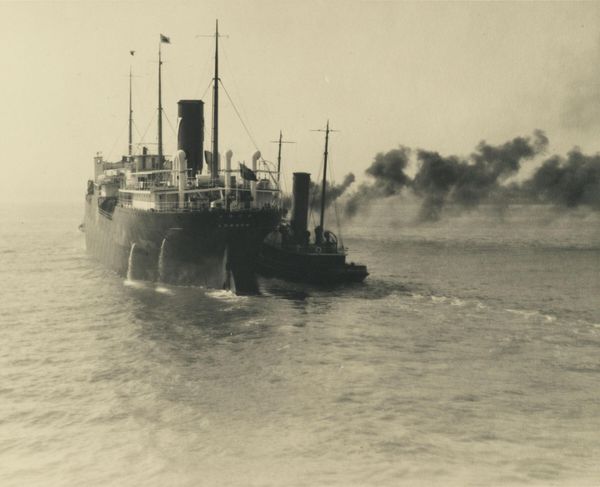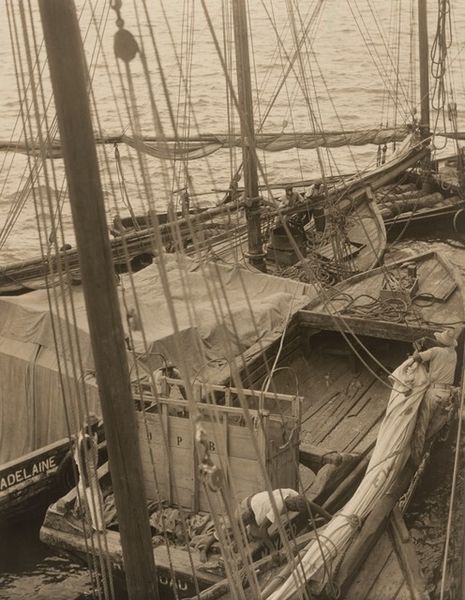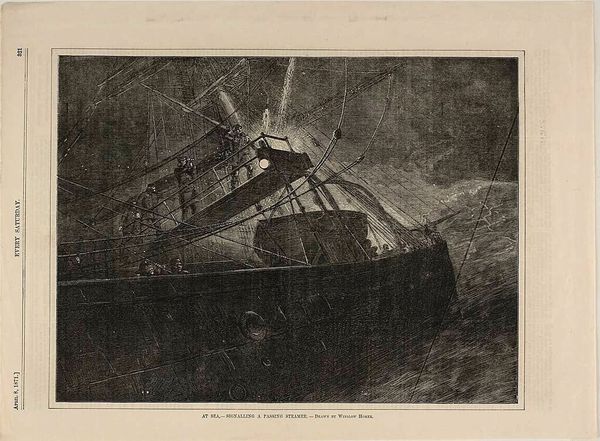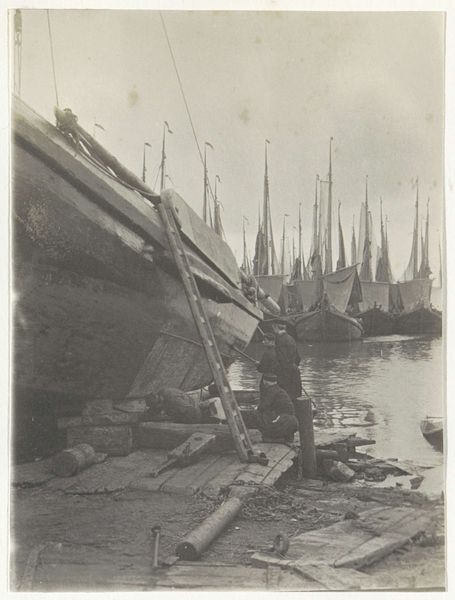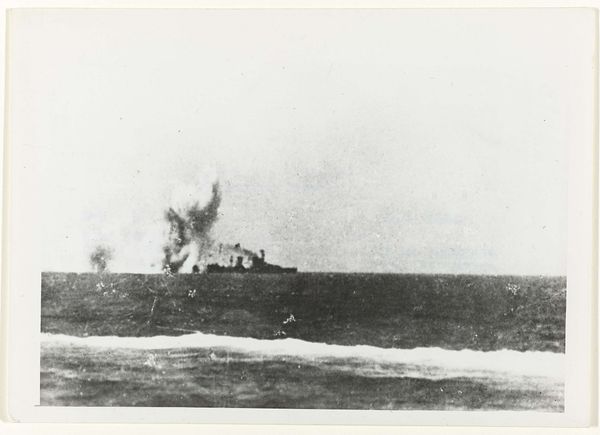
Dimensions: image: 450 x 685 mm support: 540 x 690 mm
Copyright: © Tacita Dean, courtesy Frith Street Gallery, London and Marian Goodman Gallery, New York/Paris | CC-BY-NC-ND 4.0 DEED, Photo: Tate
Curator: Tacita Dean, born in 1965, created this image titled "The Sinking of the SS Plympton." It's currently held in the Tate Collections. Editor: It evokes such a powerful feeling of finality, doesn't it? This massive form being swallowed by the indifferent sea. Curator: The SS Plympton becomes symbolic, then, of a certain industrial hubris, a loss of faith in progress, doesn't it? Its demise mirroring a broader societal shift. Editor: Absolutely. The image itself, the sinking ship, acts as a kind of memento mori, reminding us of mortality and the transience of even the most formidable structures. I see echoes of maritime disasters across history. Curator: Yes, and the act of capturing this sinking vessel allows us to see both the historical and the political dimensions of the ocean space and its impact on class dynamics and industry. Editor: It is a powerful image that speaks to both personal and collective narratives of loss. I see it as a meditation on time and memory, and the inevitable decline of material things. Curator: Precisely. It's a potent reminder of history’s relentless currents and the importance of understanding what is lost.
Comments
tate 7 months ago
⋮
http://www.tate.org.uk/art/artworks/dean-the-sinking-of-the-ss-plympton-p20251
Join the conversation
Join millions of artists and users on Artera today and experience the ultimate creative platform.
tate 7 months ago
⋮
The Sinking of the SS Plympton belongs to a portfolio of twenty black and white photogravures with etching collectively entitled The Russian Ending. The portfolio was printed by Niels Borch Jensen, Copenhagen and published by Peter Blum Editions, New York in an edition of thirty-five; Tate’s copy is the fifth of ten artist’s proofs. Each image in the portfolio is derived from a postcard collected by the artist in her visits to European flea markets. Most of the images depict accidents and disasters, both man-made and natural. Superimposed on each image are white handwritten notes in the style of film directions with instructions for lighting, sound and camera movements, suggesting that the each picture is the working note for a film. The title of the series is taken from a convention in the early years of the Danish film industry when each film was produced in two versions, one with a happy ending for the American market, the other with a tragic ending for Russian audiences. Dean’s interventions encourage viewers to formulate narratives leading up to the tragic denouements in the prints, engaging and implicating the audience in the creative process.
